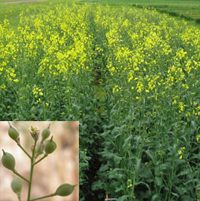Biofuels for Aviation: The Future of Jet Fuels
 Due to rising oil prices and environmental concerns, the aviation industry is now looking at biofuels as alternatives to petroleum-derived jet fuel. Test flights using biofuels are already underway as the industry looks for cost-effective, clean alternatives to kerosene as jet fuel.
Due to rising oil prices and environmental concerns, the aviation industry is now looking at biofuels as alternatives to petroleum-derived jet fuel. Test flights using biofuels are already underway as the industry looks for cost-effective, clean alternatives to kerosene as jet fuel.
ASTM D6866 Testing for Jet Biofuel Blends
ASTM D6866 testing is done on jet biofuels under development. The method determines the exact percentage of the fuel that came from renewable sources (plants) by measuring the amount of carbon 14 present in it. Any material that came from biomass has carbon 14 whereas those from fossil sources have no carbon 14. Thus, ASTM D6866 can be used as a verification tool when checking the accuracy of biofuel blends. More information on ASTM D6866 is found here.
Energy-rich Plant Extracts as Biofuels
 There are several plants whose extracts are now being tested as jet fuels. These include soy, canola, camelina, jatropha, and algae. Burning fuels from these plants’ extracts will not contribute to global warming because their combustion product is carbon-neutral carbon dioxide.
There are several plants whose extracts are now being tested as jet fuels. These include soy, canola, camelina, jatropha, and algae. Burning fuels from these plants’ extracts will not contribute to global warming because their combustion product is carbon-neutral carbon dioxide.
Although soy and canola have produced promising fuel blends for jets, they are food crops and their use for non-food purposes are under fire in food versus fuel debates.
Jet Fuels from Camelina, Jatropha, and Algae
Camelina is a flowering stalk that can reach several feet in height, and it can be grown on wheat fields that are left fallow. Fuel with camelina oil has already been used by Japan Airlines to fly a Boeing 747 for 90 minutes.

Another feedstock is jatropha, a poisonous shrub that can grow up to nine feet tall on soil that cannot sustain food crops. Like the jatropha, algae can be grown in polluted waters hence growing lots of it would not be a problem. Extracting oils from these two, however, is complex.
Oils from jatropha and algae have been blended with 50% regular jet fuel, and the blend was used by a Continental Airlines Boeing 737 to complete a two-hour test flight from Houston – the first U.S. commercial jet flight using biofuels. Japan Airlines was recorded as having used a blend of camelina, jatropha, and algae for a test flight.